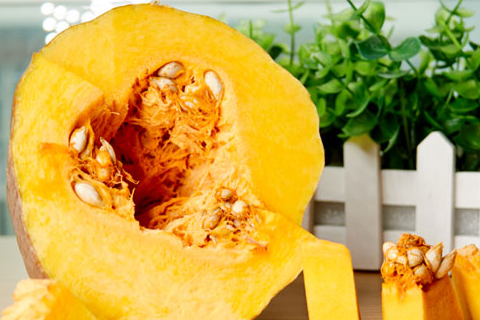Pumpkin has excellent taste and outstanding nutrition, containing rich nutrients such as vitamins, carotenes, and other trace elements, providing various nutrients to the human body.
Many pumpkins are orange in color, rich in vitamin A and carotenes. Every 100 grams of pumpkin contains 396 micrograms of vitamin A and 3100 micrograms of carotenes, which can meet the daily nutritional needs of the body.
As we all know, pumpkins contain dietary fiber and pumpkin polysaccharides, which help control postprandial blood sugar levels and enhance the feeling of fullness.
However, you may have forgotten that pumpkins also contain sugar, and many varieties of pumpkins have a high glycemic index. Therefore, consuming pumpkins may not necessarily lower blood sugar but could raise it.
Especially for those sweet and starchy pumpkins, which contain more sugar, when eating these pumpkins, reduce the intake of staple foods. For example, if you consume a 200g piece of old pumpkin, you should decrease your rice intake by 50 to 80g, roughly half a small bowl. For milder, more crunchy tender pumpkins, they can be consumed as a vegetable dish.
For diabetes patients who want to eat pumpkins, it is advisable to choose tender pumpkins with low sugar content and preferably cook them instead of using methods like frying in oil or stewing with meat, as this could lead to excessive fat intake, detrimental to blood sugar control.
Control eating habits, especially focusing on diet. For diabetes patients and those preventing diabetes, control total energy intake to maintain normal weight; consume sufficient vegetables, over 500g daily, and eat a reasonable amount of fruits based on your blood sugar levels; consume fish, poultry in moderation, avoid or reduce processed and pickled meats, stay away from sugary drinks.
Engage in physical activity, perform 150 minutes of aerobic exercise weekly. You can choose to exercise 5 times a week for half an hour each session or do short bouts of exercise accumulatively adding up to half an hour daily. The exercise intensity should feel slightly exerting, with elevated heart rate and breathing but not breathless, like brisk walking, cycling; engage in resistance training twice a week, such as push-ups, sit-ups, progressing to weight training like squats, weighted walks as capability increases.
Limit alcohol intake, as consuming over 50g for women and 60g for men increases the risk of diabetes and can trigger hypoglycemia in diabetes patients, hindering blood sugar control. If you must drink, avoid drinking on an empty stomach. Women should not exceed 15g of alcohol, equivalent to 450ml of beer below 40 degrees, 150ml of wine, or 50ml of spirits; men should not exceed 25g of alcohol, equivalent to 750ml of beer below 40 degrees, 250ml of wine, or 70ml of spirits.
Furthermore, it’s best for diabetes patients to quit smoking and maintain good body weight to facilitate blood sugar control.


